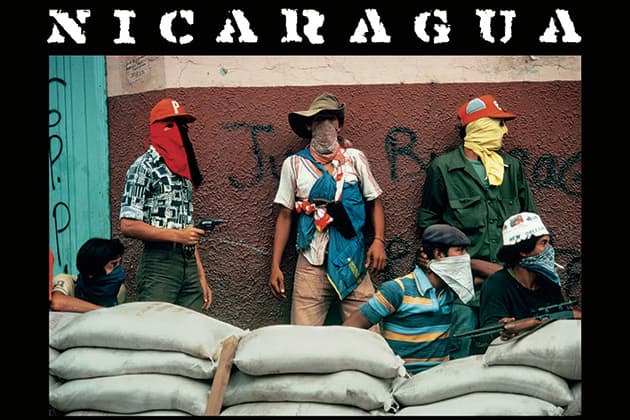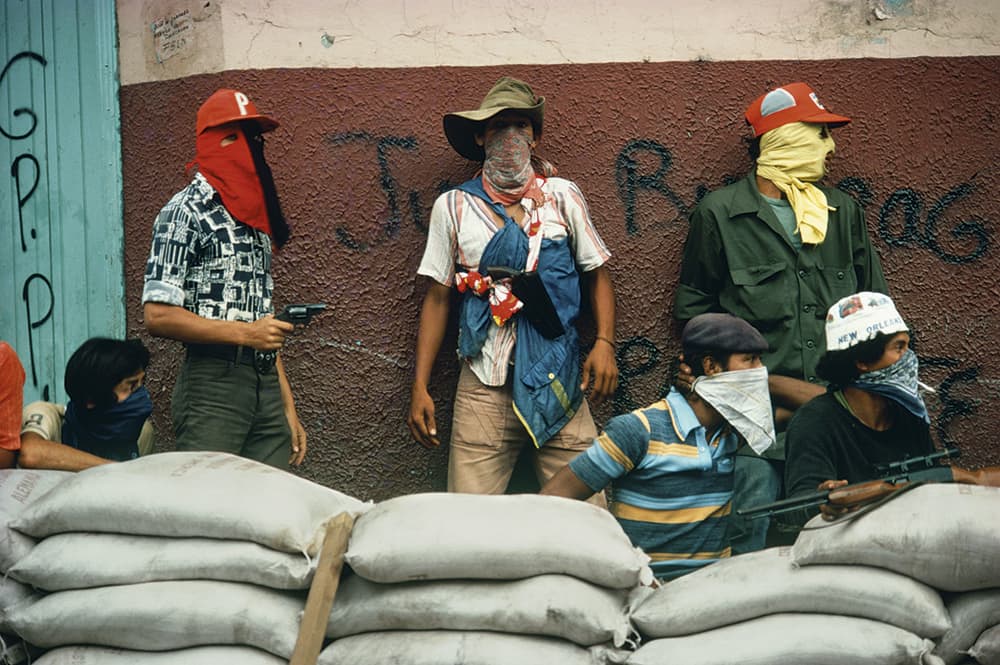
Muchachos await the counterattack by the National Guard in Matagalpa.
What exactly do we mean by the term ‘concerned photojournalism’? In The Concerned Photographer (1968), Hungarian American photographer (and younger brother of Robert) Cornell Capa articulated perhaps the clearest definition of the term: ‘images in which genuine human feeling predominates over commercial cynicism or disinterested formalism.’ Similarly, the writer David Campbell argues that ‘photojournalism – that broad swathe of photographic practice that tells visual stories about the world, and which can include documentary, editorial, news or social photography – has a particular responsibility and a particular opportunity to both represent the world better and make better worlds imaginable.’
It’s with these thoughts in mind that we find ourselves in the company of Aperture’s recent republication of Susan Meiselas’s contemporary classic volume Nicaragua: June 1978-July 1979. In Nicaragua, Meiselas attempts to build a narrative of a country that was at the time in a state of fierce transition.
The Somoza dynasty that had held a dictatorial grip on the country since the mid-1930s was on the verge of collapse. By the late 1970s the dictatorship had begun to face opposition that, in its arrogance, it perhaps wasn’t prepared for. In 1961, the Sandinista National Liberation Front (FSLN), a revolutionary group that established itself within a milieu of oppositional organisations, and youth and student groups, was founded. Over time its force and politics grew stronger and by the 1970s it was launching military initiatives.
To give you some idea of the corruption that the US-backed Somoza family were capable of, following a 6.2 magnitude earthquake that destroyed much of the city of Managua, President Anastasio Somoza Debayle’s National Guard embezzled a vast majority of the international aid that flowed into the country. On top of that, through a bit of creative contracting, Somoza was able to profit from the devastation and tighten his control over the city’s economy. This seemed to be the last straw for the FSLN. In the following years, sieges were initiated, hostages taken, assassinations were rife, prisoners were broken out of jail, threats were made and the country began to topple into revolution. In 1978, the leader of the opposition Pedro Joaquín Chamorro Cardenal of the Democratic Union of Liberation, was assassinated triggering a general strike and bringing together moderates and the FSLN in a united front to oust Somoza. The FSLN offensive ended in 1979 with the ousting of Somoza, who was then assassinated in 1980.
Photographic witness
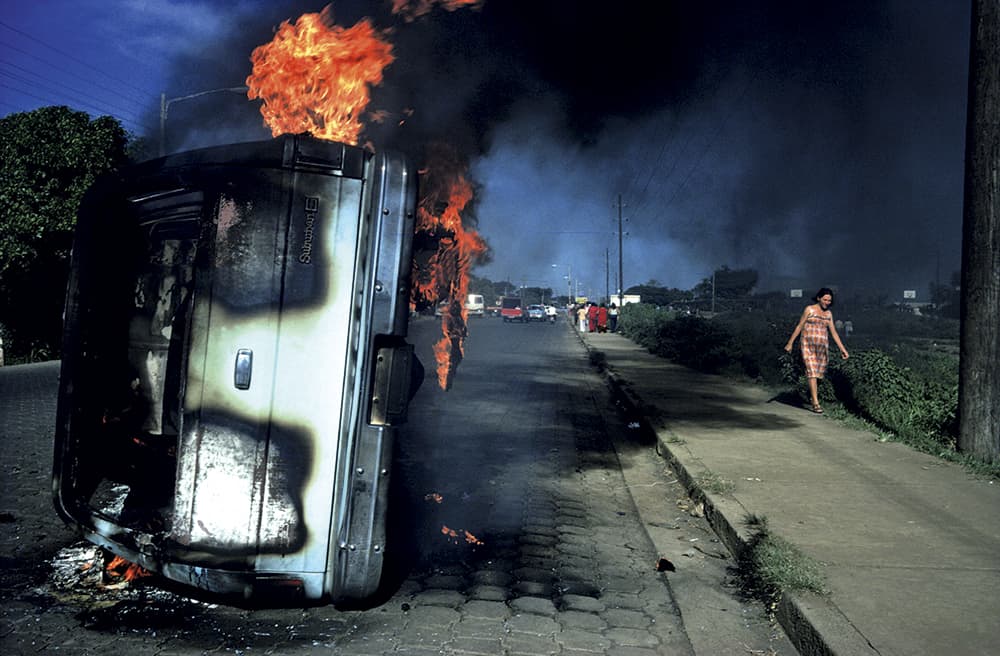
A life less ordinary – a woman passes by the burning car of a Somoza informer in Managua.
In the late 1970s, Meiselas arrived on the scene with her camera and was just in time to witness the dying throes of the Somoza dynasty and the Sandinista revolution that led to its downfall. Many of the images are incredible to behold and tell us much about the state of a nation as it undergoes radical shifts in its cultural and political landscape. One image in particular is notable, called ‘Car of a Somoza informer burning in Managua’ (see above). A car lies burning on its side in the middle of a road as a woman walks by going about her day, flinching her head a little at either the intense heat of the flaming vehicle or perhaps even at the presence of Meiselas’s camera. It’s an image that encapsulates something that can be found in a variety of photographic books about countries in turmoil. The citizens who live there can do nothing more than go about their everyday lives. Burning vehicles, bullet holes and corpses become part of the everyday landscape.
This updated version of Nicaragua includes interviews with participants in the revolution, along with letters, poems and statistics. Excerpts from these interviews, gathered during Meiselas’s return to Nicaragua in early 1981, accompany many of the plates in the book and offer so much more than a simple republication of images possibly could. What we have here is a book that deals in context and personal stories, by the very people who were involved and directly affected by the events. However, another thing this book has to offer is a really rather lovely thing.
Aperture has included an augmented reality function (just hover your phone over the page) that brings a selection of images to life via clips from Meiselas’s films Pictures from a Revolution (1991). In that film Meiselas returned to the scenes she originally photographed, tracking down subjects and interviewing them. Also featured are clips from Reframing History (2004), a documentation of her return in 2004 with 19 mural-sized images of her photographs from 1979, to collaborate with local communities and create sites for collective memory.
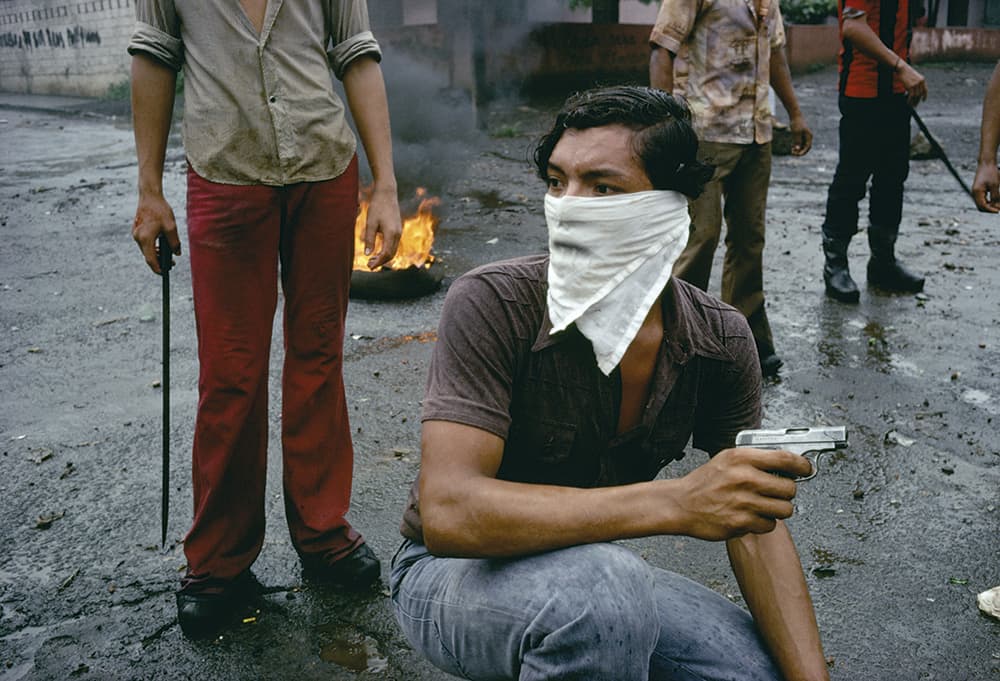
A street fighter, armed and waiting, is ready for action in the pressure cooker of Managua.
These additions to the original offer a layered perspective on history. Images, text and video combine to create an approach to the work that gives context and a great lesson in the history of the country’s tumultuous history. Nicaragua is a vital project in the pantheon of photojournalism. Cornell Capa would most definitely have approved.
SCORE: 5 out of 5
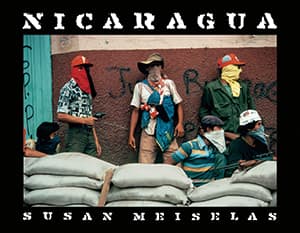
Published by Aperture
Price £35, 128 pages, hardback
ISBN 978-1-59711-383-0

